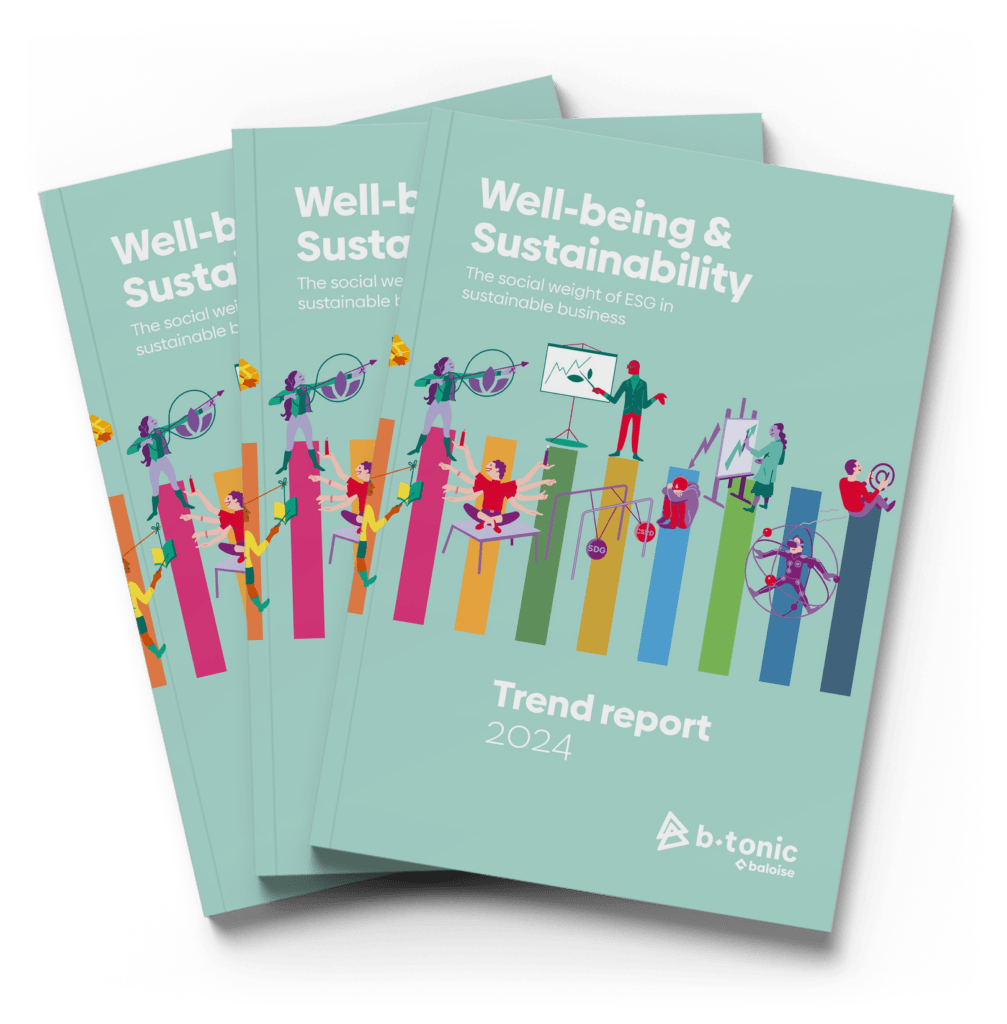Employer obligations regarding workplace well-being
Employees form the backbone of your organization. Without them, your business activities could essentially come to a halt. The Belgian Welfare Act of 1996 protects employees in the workplace. Therefore, employers are responsible for creating a work environment where everyone feels good. Obligations such as welfare policy, psychosocial well-being, and the employment deal play an important role in improving employee well-being. This promotes both the health and productivity of the staff.
How can you take good care of your employees? Let’s take a look at what Belgian law says about this.
The well-being law as a foundation.
The law of August 4, 1996 concerning the well-being of employees during the performance of their work, also known as the ‘welfare law,’ is the fundamental law regarding safety and health at work. This regulation creates a framework based on which implementing decisions are made. Organizations can always refer back to this legislation to know what obligations they have towards their employees.
Mandatory well-being policy
Companies are required by law to implement a well-being policy, requiring every employer to ensure the well-being of its employees within its organization. This policy is aimed at preventing occupational accidents and illnesses, and improving the relationship between employees and their work. It is essential that employers establish prevention measures appropriate to the nature of their business activities and the number of employees, taking into account their specific risk profile.
Mandatory psychosocial well-being policy
Organizations are required to have a psychosocial wellness policy. It is becoming increasingly clear that human capital is crucial to organizations. Satisfied employees often perform above expectations, are proactive and show initiative. Their creativity and innovation drive the growth of the organization and keep operations running smoothly.
In addition, a positive work environment results in less turnover, lower absenteeism and a decrease in errors and accidents. By investing in employee wellness, organizations have the opportunity to increase productivity and invest in the quality of work.
Contact B-Tonic for an intake interview and/or peer review on psychosocial well-being within your organization
What are psychosocial risks?
The Well-Being Act emphasizes harm prevention and reduction. She defines psychosocial risk as the likelihood of psychological harm, whether or not accompanied by physical harm. This is due to exposure to various aspects of the work environment over which the employer has influence.
These risks can cause various problems, such as work stress, burnout, relational distress in personal or group conflicts, and even violence, harassment and unwanted sexual behavior. These elements can interact and negatively affect employee well-being, leading to increased absenteeism and possible substance abuse.
To address these risks and improve well-being in the workplace, a thorough risk assessment is essential. By identifying areas for improvement and formulating an action plan, organizations can protect the health and well-being of their employees. The crucial factor here is the involvement of all parties, such as HR, internal prevention services and managers, to successfully implement the wellness policy.
A risk assessment provides an opportunity to identify and address psychosocial risks in the workplace. A complete psychosocial risk assessment includes five work domains, also known as the five W’s.
- Work organization: This includes the organization’s structure, management style and policies.
- Work content: This includes tasks, complexity, variety and clarity of tasks.
- Working conditions: This includes everything related to the performance of work, such as employment contracts and work schedules.
- Working Circumstances: This includes the material environment of work, such as the workplace and materials used.
- Work relations: This includes interpersonal relationships at work, both internal and external.
As an employer, you have a choice between a qualitative or quantitative approach to risk analysis.
- A qualitative approach includes questioning employees about their experiences and listening to suggestions for improvement.
- A quantitative approach includes the use of questionnaires to identify psychosocial risks.
Designation of a trustee
A confidant is a key figure in preventing and addressing psychosocial risks at work. Employers with at least 50 employees are required to appoint one or more confidential counsellors, in consultation with the Committee for Prevention and Protection at Work. This person, internal or external, serves as the first point of contact for employees with welfare issues, with the necessary confidentiality and without formalism. For smaller companies, the appointment of a confidential officer is not mandatory unless requested by all members of the union delegation or all employee.
Internal and external prevention service
When an employer employs at least one employee, it is required by law to establish an internal occupational prevention and protection service. Within this department, one or more employees are appointed as prevention advisors. In companies with fewer than 20 employees, the employer himself can serve as prevention advisor.
In addition to the internal service, the employer must also be affiliated with an external occupational prevention and protection service. If the in-house prevention advisor cannot perform all the tasks, the employer may call on the external Service for Prevention and Protection at Work. This external service takes on the aspects of well-being legislation where the internal service lacks the appropriate competencies.
The prevention advisor, internal and external service are ready to support employers and employees in complying with the legislation related to well-being at work.
Labor deal: Submitting a training plan.
Starting from 2024, employers with at least 20 employees must annually submit a training plan by March 31st, approved by the employees. This includes five training days per full-time employee, an increase of one day compared to 2023. The plan should include training for at-risk groups such as those over 50 and employees with disabilities, as well as for bottleneck occupations within the employer’s industry. With the aim of reforming the labor market and increasing employment, the goal is to reach 80% employment by 2030.
Right to disconnect
Employers must give employees their full rights, including the right to disconnect. This means that employees are not required to be reachable for work-related communications outside working hours. This protects employees from excessive stress and burnout, and promotes a better work-life balance.
The benefits of well-being at work are not limited to the workplace. By investing in employee well-being, companies also demonstrate their social responsibility. They reduce absenteeism, promote health and strengthen social cohesion within the community.
Possible solutions
With the right help from one of our experts, and by taking advantage of our offerings, you can significantly improve the well-being of your employees. We take an integrated approach to wellness in your business, focusing on sustainability and creating a healthy, stress-free and safe work environment where employees can perform at their best.
- Fully map your employees’ well-being and establish action plans by using our People Sustainability Scan.
- Find out how physically and mentally healthy your employees are using our scans.
Visit our website to discover more solutions we offer to ensure the well-being of your employees.





